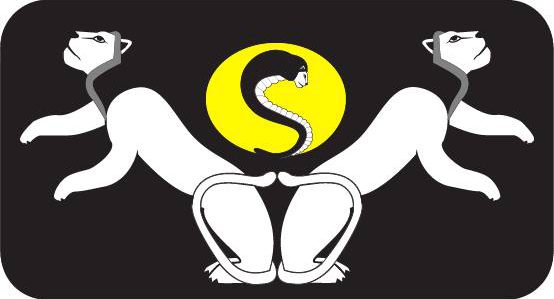
Graffiti and The Dance of Power Relations
From its beginning almost 40 years ago, Hip-Hop culture has had afrofuturist tendencies, from costumes and sounds of artists like Afrika Bambaataa and Ramellzee to later Missy Elliot and her videos with Hype Williams; to the hacking of street lamps to power sounds systems and other innovative rewiring to create the music; to the otherworldly movements of breakdancers and the artwork of graffiti. Well, choreographer and leader of the Renegade Performance Group, Andre M. Zachery, decided to pay homage to that spirit of Hip-Hop culture highlighting the power and politics of graffiti culture through dance. In the first work of Renegade’s AFROFUTURISM Series, called The Inscription Project, the piece takes inspiration from the art and philosophy of Ramellzee; it seeks to reignite the original purpose of the art movement as a politically empowering means to give voice and shed light on those who are on the margins of society and the social injustice they face everyday.
Speaking of marginalized groups, Zachary’s inclusion of four women to be in a performance about graffiti and hip-hop, which has often marginalized women, added a dimension to the themes of the project. Dancers Zachary, Sarah Chien, Steph Lee, Candace Thompson and Nehemoyia Young performed various scenes starting with the bare base dance that mimicked the stop and flow rhythms of hip-hop and city life as they slid across the floor and stopped into several poses. Moving to the only set props, a makeshift wall and the square floor that imitated the cardboard floors that breakdancers would use to dance on, the piece fleshed out to what looks like re-stylized breakdance moves whiles images project on the wall and floor, scenes from the documentary Style Wars. The most poignant parts of the piece hinted at the struggle between different groups, like the tussle with the jackets between Zachery and Chien, which results in Chien taking both and zipping them to form a four-arm being costume. The battle between them continuing to see who gets it hints at the struggle for resources and space that still continues in New York City and hip-hop’s role in voicing that, but also the almost superhuman skills of these artists in hip-hop culture produced from that struggle.

Another was the use of the spray can, both the physical use of the can and as a dance pose. Each had their own singular performance, using the cans to spray the wall and spray themselves, which reinforced the title of the project, that graffiti is a form of language and that social politics is often a battle of words — who gets to write and have voice, and who gets written upon (Reminds me of Mark Anthony Neal’s Looking for Leroy: Illegible Black Maculinities). Young’s particular performance was the most striking as she ran in place, spraying back at the image on the wall of police with “Blue Lives Matter” at the top, displaying power to deface and reimagine the image, the way hip-hop culture, graffiti and black lives have done in response to the defacement they receive.
The project ended with an explosive dance that pulled from the dances and music familiar in hip-hop, and included the physical propulsion technique, described as “‘flying low’ work (codified by David Zambrano), dynamically engaging the cranial-sacrum connection for seamless floor vocabulary, intelligent shifts in body weight, and fierce aerial movement.” In this acrobatic, high momentum, the dancers rolled and tumbled on the floor and poses their bodies in various strenuous positions, like Chien balancing on one foot. Equally with as much force was the dancers silently coming close to and facing the crowding, looking straight at us, sometimes holding their hands in a spray can position, as if challenging us to fight back against the writing upon our own bodies by society.
It has been a couple of weeks since I saw this performance and yet its still has remained imprinted onto me. It holds within the same confrontational spirit of graffiti and hip hop in general that said we had the right to leave our mark on society, determine the spaces we live in and rewrite our futures, that we will not be silenced because our lives matter.
